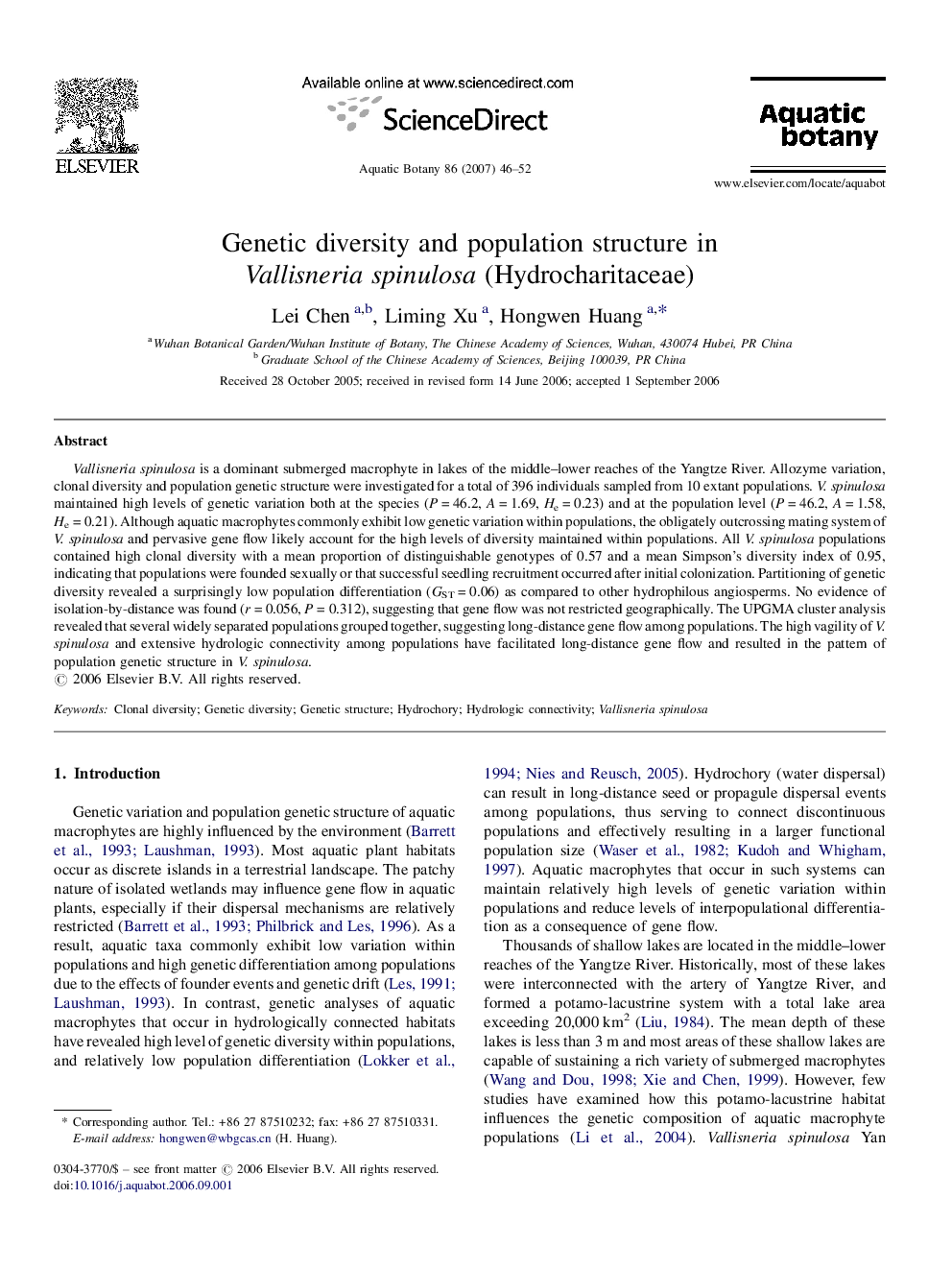| Article ID | Journal | Published Year | Pages | File Type |
|---|---|---|---|---|
| 4528479 | Aquatic Botany | 2007 | 7 Pages |
Vallisneria spinulosa is a dominant submerged macrophyte in lakes of the middle–lower reaches of the Yangtze River. Allozyme variation, clonal diversity and population genetic structure were investigated for a total of 396 individuals sampled from 10 extant populations. V. spinulosa maintained high levels of genetic variation both at the species (P = 46.2, A = 1.69, He = 0.23) and at the population level (P = 46.2, A = 1.58, He = 0.21). Although aquatic macrophytes commonly exhibit low genetic variation within populations, the obligately outcrossing mating system of V. spinulosa and pervasive gene flow likely account for the high levels of diversity maintained within populations. All V. spinulosa populations contained high clonal diversity with a mean proportion of distinguishable genotypes of 0.57 and a mean Simpson's diversity index of 0.95, indicating that populations were founded sexually or that successful seedling recruitment occurred after initial colonization. Partitioning of genetic diversity revealed a surprisingly low population differentiation (GST = 0.06) as compared to other hydrophilous angiosperms. No evidence of isolation-by-distance was found (r = 0.056, P = 0.312), suggesting that gene flow was not restricted geographically. The UPGMA cluster analysis revealed that several widely separated populations grouped together, suggesting long-distance gene flow among populations. The high vagility of V. spinulosa and extensive hydrologic connectivity among populations have facilitated long-distance gene flow and resulted in the pattern of population genetic structure in V. spinulosa.
